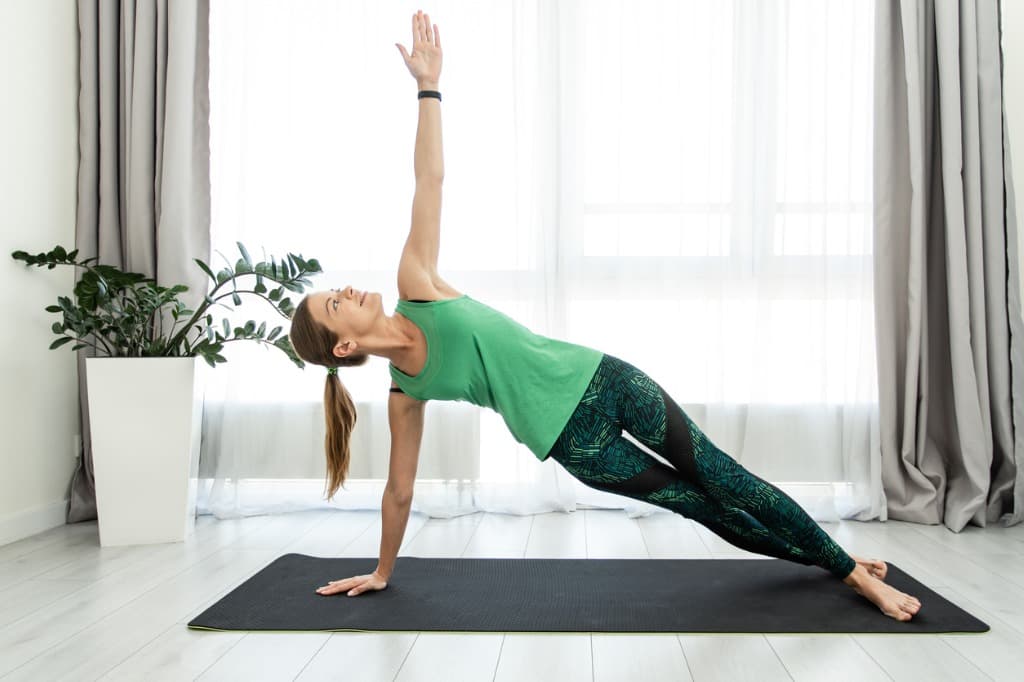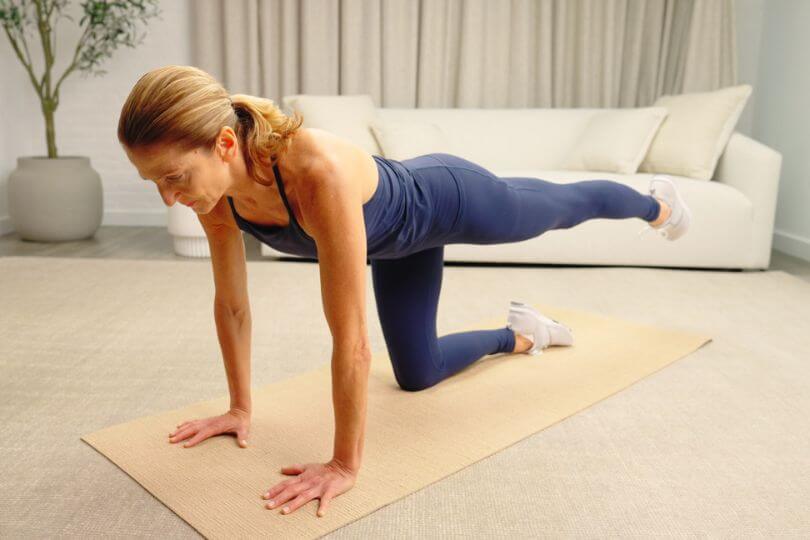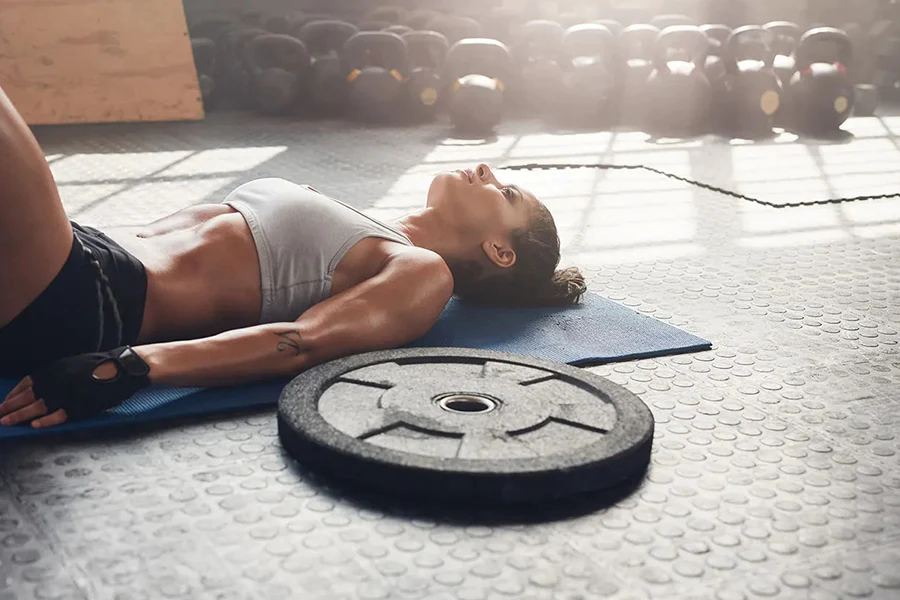Strong, dense bones are vital for overall health, mobility, and fracture prevention as we age. While calcium and vitamin D are crucial bone-building nutrients, exercise also plays a pivotal role in maintaining and increasing bone mineral density. Today we will share the top 15 exercises to stimulate osteoblast cells and promote bone formation.
From weight-bearing and resistance training to unique bone-loading activities, we’ll cover a variety of focused workouts that apply optimal stress to the skeletal system.

15 Best Exercises For Bone Density
Maintaining or improving bone density is crucial for overall health, especially as you age or if you’re at risk for osteoporosis. Exercise, particularly weight-bearing and resistance training, plays a vital role in strengthening bones. Here’s a list of 15 exercises known for their benefits in improving bone density:
1. Weight-Bearing Walking
Walking is one of the most accessible exercises for improving bone density. By simply putting your body’s weight on your legs, you stimulate the bones in your lower spine, hips, and legs to become stronger. Regular brisk walking, ideally 30 minutes a day for most days of the week, can significantly impact bone health. It’s easy to incorporate into daily routines, whether it’s a morning stroll, a walk during lunch breaks, or an evening trek with a pet or friend.
2. Stair Climbing:
Stair climbing is an excellent way to build bone density in the lower body, including the hips, thighs, and lower spine. This exercise mimics weight-bearing activities but with added resistance as you work against gravity. Incorporating stair climbing into your routine, even in short daily sessions, can strengthen bones, improve cardiovascular health, and enhance endurance. It’s an effective workout that requires no special equipment and can be easily found in everyday environments like offices, parks, or homes.
3. Jogging:
Jogging is a step up from walking and can have a more significant impact on improving bone density, particularly in the legs and spine. It applies gentle stress to the bones, which encourages bone-forming cells to spring into action. For optimal results, jog for at least 20 to 30 minutes at a moderate pace on most days of the week. It’s vital to wear appropriate footwear to reduce impact and prevent injuries.

4. Dancing:
Dancing is not just an enjoyable activity but also an effective way to enhance bone density, especially in the hips. Various dance styles, from ballroom to hip-hop, can provide the weight-bearing and muscle-strengthening benefits needed to boost bone health. Dancing for at least 30 minutes on most days can lead to significant improvements, plus it’s a fun way to stay active and reduce the risk of osteoporosis.
5. Hiking:
Hiking offers the dual benefits of weight-bearing exercise and enjoying nature, which can positively impact bone density, especially in the spine and legs. The varying terrain of hiking trails provides a natural way to challenge the body, strengthen bones, and build muscle support. Aim for hikes that are moderately challenging to get the best benefits for bone health.
6. Tennis:
Playing tennis is a dynamic way to improve bone density. This sport involves quick, forceful movements that apply stress to the bones in the arms, legs, and spine, stimulating them to grow stronger. Regularly playing tennis, even a couple of times a week, can lead to improved bone health, agility, and coordination.

7. Elliptical Training:
Elliptical machines provide a low-impact, weight-bearing exercise that can significantly benefit bone density, particularly in the spine and legs. The motion of the elliptical mimics running but without the harsh impact on the joints, making it an excellent option for those with concerns about joint health. Aim for sessions of 30 minutes most days of the week for the best results.
8. Yoga:
Yoga, with its various poses and stretches, can enhance bone density by stimulating bone growth and reducing stress, which is often a contributing factor to bone density loss. Poses that focus on balance and strength, such as Warrior and Tree poses, are particularly beneficial for the spine, hips, and wrists. Practicing yoga for at least 30 minutes a day can lead to improvements in bone health, flexibility, and mental well-being.
9. Tai Chi:
Tai Chi is a gentle form of martial art known for its health benefits, including improving balance and bone density. Its slow, deliberate movements can strengthen the muscles and bones, particularly in the spine and legs, without putting too much stress on the joints. Regular practice, ideally daily, can help increase bone density, reduce the risk of falls, and enhance overall health.
10. Strength Training:
Strength training, using free weights, machines, or body weight, is crucial for building bone density. It applies stress to the bones in the muscles being worked, which stimulates bone growth. Incorporate exercises targeting all major muscle groups into your routine at least 2-3 times a week for optimal benefits. It’s important to focus on form and gradually increase the weight or resistance to continue challenging the body.
11. Squats:
Squats are a powerful exercise for increasing bone density in the lower body, including the hips, thighs, and lower spine. They not only apply beneficial stress to these bones but also strengthen the surrounding muscles, providing additional support and stability. Performing squats with proper form 2-3 times a week, with or without added weight, can significantly impact bone health.
12. Lunges:
Lunges are an effective exercise for targeting the legs and hips, crucial areas for bone density. By stepping forward and bending the knee, you create a scenario that mimics the weight-bearing effect necessary for bone growth. Lunges are versatile and can be performed anywhere, with or without weights, making them a convenient exercise for strengthening bones. Incorporating lunges into your fitness routine several times a week will not only improve bone density but also enhance balance and muscle endurance.

13. Push-ups:
Push-ups are a compound exercise that targets the upper body, including the chest, shoulders, and arms, and indirectly supports spine health by strengthening the core muscles. This exercise applies stress to the bones in the arms and shoulders, which can help increase their density. Regular push-up sessions, even if started with modifications like knee or wall push-ups, can significantly benefit bone health and overall strength.
14. Jumping Jacks:
Jumping jacks are a high-impact, cardiovascular exercise that can also help improve bone density, especially in the legs and lower spine. The repetitive jumping motion applies stress to the bones, stimulating them to grow stronger. Incorporating jumping jacks into your exercise routine, in short bursts throughout the day or as part of a more extended workout, can enhance bone health along with cardiovascular endurance.
15. Resistance Band Exercises:
Resistance band exercises offer a versatile and joint-friendly way to improve bone density. They provide resistance that helps strengthen both muscles and bones, particularly beneficial for the hips, spine, and shoulders. Exercises can range from resistance band squats to arm curls, offering a full-body workout that’s accessible and effective. Engaging in resistance band workouts 2-3 times a week can lead to significant improvements in bone density and overall physical health.
Frequently Asked Questions
How can I increase my bone density fast?
To increase bone density fast, engage in weightlifting and strength training. Add more vegetables to your diet, consume calcium, and eat foods rich in vitamins D and K. Also, maintain a moderate weight, avoid low-calorie diets, increase your protein intake, and consume foods rich in omega-3 fatty acids.
What exercises should you not do with osteoporosis?
Avoid exercises that could lead to bending or twisting forcefully at the waist, such as touching your toes, doing sit-ups, golf, tennis, bowling, and certain yoga poses. These could potentially lead to harm if you have osteoporosis.
What foods should you avoid if you have osteoporosis?
Avoid high-sodium foods, red meats, sugary treats, oxalate-rich foods, wheat bran, caffeine, alcohol, and soda. These foods may contribute to bone density loss or interfere with calcium absorption.
Can bone density increase with exercise?
Yes, exercise can increase bone density. Bone is a living tissue that adapts to forces placed upon it. Regular exercise, especially while young, builds more bone and makes it denser.
How much weight should I lift for bone density?
The loading required to stimulate bone building process equals 4.2 times body weight, according to a study by scientists in the United Kingdom. This can be achieved using weightlifting and strength training exercises.

Hello, I’m Ravindra. Over the years, I’ve immersed myself deeply into the world of fitness and health, transforming both my body and mind. Writing has allowed me to share my journey, insights, and expertise with those just starting out and seasoned fitness enthusiasts alike. Beyond just routines and diets, I believe in inspiring others to adopt a holistic approach to well-being.
